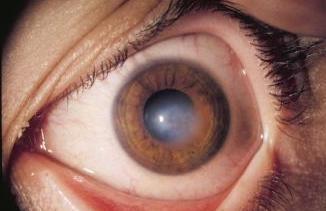
You’re talking to a friend, a family member, or a new acquaintance, and you notice it—a distinct, milky-white spot in the colored part of their eye, the iris. It’s a startling discovery, something that seems to sit directly on the surface of their gaze. While it might be easy to dismiss as a simple birthmark or an odd freckle, that single white spot can be a significant visual clue to a condition happening deep within the eye.
A white spot in someone’s iris could mean several things, ranging from a harmless quirk to a sign of a serious underlying disease. It is almost always a reason to see an ophthalmologist for a definitive diagnosis.
The Most Common Cause: A Corneal Problem
Very often, what appears to be a spot on the iris is actually a issue on the clear, domed window that covers the iris and pupil—the cornea. When the cornea is damaged or infected, it can become cloudy or scarred. This cloudiness can look like a white spot over the iris, but the problem lies in the cornea itself.
- Corneal Ulcer: This is an open sore on the cornea, usually caused by an infection (bacterial, viral, or fungal). It’s often painful, causes redness, and feels like there’s something in the eye. The “white spot” is actually a collection of white blood cells and pus fighting the infection in the ulcer. This is a medical emergency, as it can threaten vision if not treated promptly.
- Corneal Scar (Leukoma): After an injury or a severe infection heals, it can leave behind a scar on the cornea. This scar is often a permanent, white, or cloudy area that obstructs the view of the iris beneath it. Unlike an active ulcer, a scar is typically not painful.
When the Spot is in the Iris Itself
Sometimes, the spot is actually a growth or a change within the iris tissue.
- Iris Nevus: This is a freckle or mole on the iris. Like a skin freckle, it is usually flat and brown, but some can be so densely packed with pigment cells that they appear tan or light yellow. While generally harmless, an ophthalmologist needs to monitor it for any changes, as rarely, it can develop into a melanoma.
- Brushfield Spots: These are tiny, white or light-colored speckles that form a ring around the outer edge of the iris. They are very common in people with Down syndrome but can also occur in the general population (then called Wolfflin nodules), where they are harmless.
- Iris Melanoma: This is the most serious possibility, though less common. It is a cancer of the iris. It may appear as a growing, dark or light spot. Unlike a stationary nevus, a melanoma often changes in size or shape over time and can cause other symptoms like vision changes or an increase in floaters. Any new or changing spot on the iris must be evaluated to rule out this possibility.
A Sign of a Systemic Condition: Cataracts
In some cases, the white spot isn’t on or in the iris at all. A mature cataract, which is a clouding of the eye’s natural lens that sits directly behind the pupil, can become so dense and white that it’s visible through the pupil. When you see this, it looks like a white spot behind the pupil, often making the entire pupil appear white or gray instead of black. This is a sign of very advanced cataracts.
What to Do If You See a White Spot
This is not a finding to ignore or self-diagnose.
- See an Ophthalmologist: This is the only way to get a correct diagnosis. They will use a slit lamp microscope to determine the exact location and nature of the spot.
- Note Any Other Symptoms: Be prepared to tell the doctor if there is any pain, redness, change in vision, or if the spot is new or growing.
- Do Not Panic: While the list of causes includes serious conditions, many are treatable, and others are completely harmless. The key is to get a professional evaluation.
A white spot in the iris is a clear signal from the body that something in the eye’s delicate ecosystem has changed. It is a message written in a unique visual language, one that an eye doctor is trained to read. By seeking a professional interpretation, you can ensure that whether the spot is a harmless freckle or a sign of a treatable condition, it receives the appropriate attention to protect one of our most precious senses: our sight.